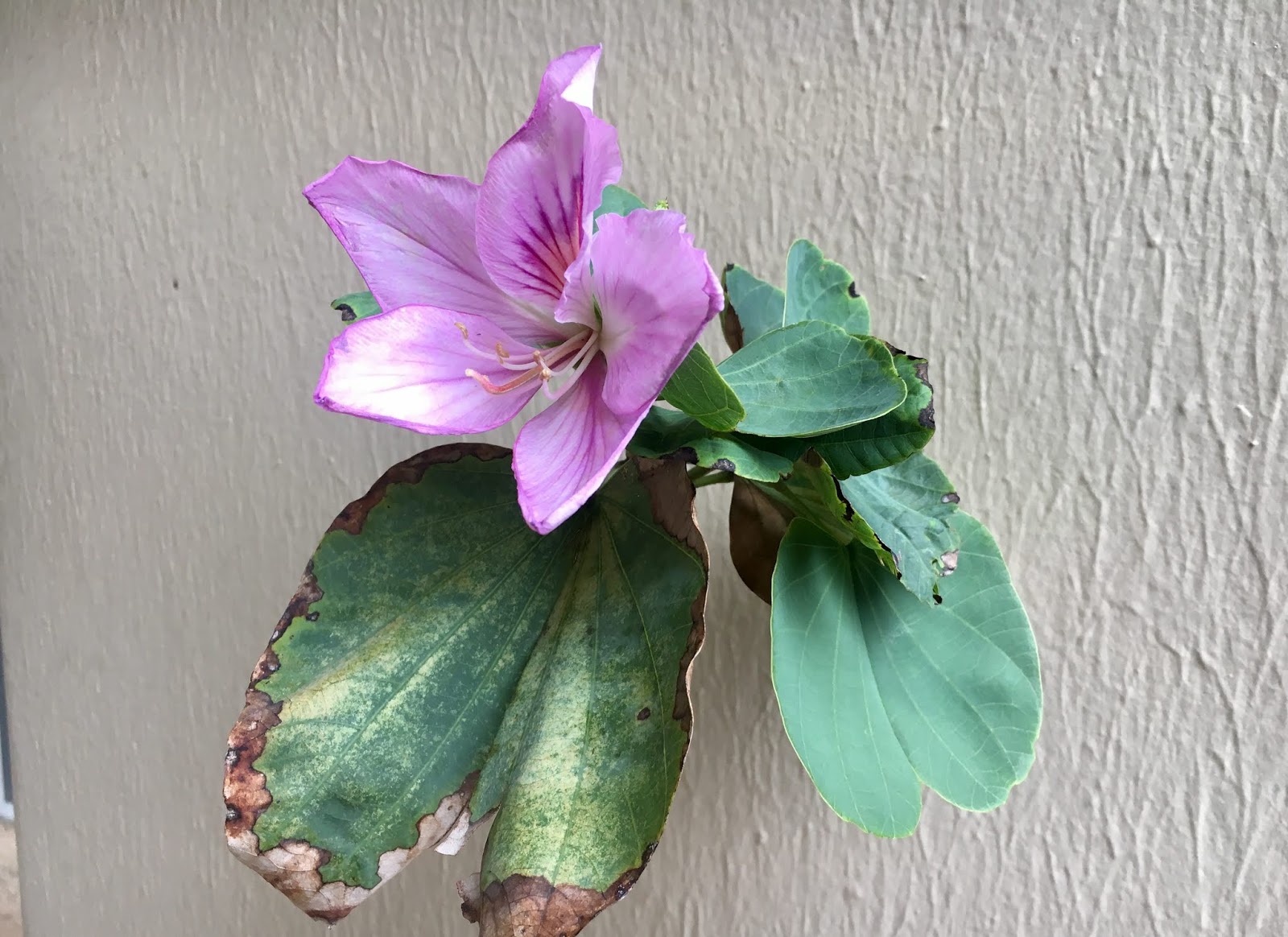Bauhinia variegata (Orchid Tree)
- TropPlant Accession Number (TPAN): 0084
- Botanical Name: Bauhinia variegata
- Common Name: Orchid Tree, Camel's Toe Tree, Mountain Ebony
- Cultivar: N/A
- Family: Fabaceae
- Native To: Southern and Southeast Asia
 |
| Bauhinia variegata Photo by Matthew Gaston |
Landscaping Information
- Plant Type: Tree
- Texture: Dense
- Form: Round-Headed to Upright-broad
- Height (on average, in landscape use): 30'-40'
- Height to Spread Ratio: 1:1 to 1:2
- Growth Rate: Medium
- Landscape Values: Accent, Street Tree, Shade, Specimen
- Outstanding Quality: Flower Color, Seasonal Color
 |
| Bauhinia variegata outside of St. John Plant Sciences Building at UH Manoa Photo by Matthew Gaston |
Botanical Descriptions
- Flowers: 3"-4.5" wide (petal to petal), dark pink to pink to white petals with purple streaks and even yellow highlights. Cassia-type flowers; 5 petals, bilateral symmetry. Prominent darker venation in petals usually purple or pink while the remainder of the petal is white, light pink, pink, or even cream-like yellow to yellow. Pure white flowers are rare. One petal (the "top" petal) is larger and more pigmented than the others giving rise to the similarity with orchid flowers. 5 fertile stamens. Mildly fragrant.
 |
| Bauhinia variegata flower Photo by Matthew Gaston |
 |
| Bauhinia variegata flower. Note the petal with more prominent venation and pigmentation. This makes the flower resemble that of an orchid. Photo by Matthew Gaston |
- Fruits: A dehiscent pod usually with about a dozen seeds or more.
- Foliage Color: Young/immature: Soft Green. Mature: Dark Green
- Leaflet Tip: Rounded
- Leaf Base: Rounded
- Petiole: 0.5"-0.75"
- Stipules: N/A
- Margins: Smooth
- Leaf Arrangement: Alternate
- Leaf Shape: Obcordate
- Leaf Type: Simple
- Leaf Texture: Stiff and firm; smooth adaxial (top) surface while the abaxial (bottom) surface features prominent venation. Less waxy and glabrous than B. galpinii.
- Leaf Special Notes: A leaf with two lobes, giving it the appearance of a donkey's foot or some even-toed ungulate. This means that each leaf has two leaflets. In B. variegata, it seems like they could be continuous, but other member of Bauhinia provide clearer examples of being two leaflets.
 |
| Bauhinia variegata adaxial leaf surface Photo by Matthew Gaston |
 |
| Bauhinia variegata abaxial leaf surface Photo by Matthew Gaston |
- Bark and Trunk: Smooth, gray to brown.
Horticultural Information
- Light Preference: Full Sun
- Light Tolerances: Semi-Sun
- Soil Preferences: Slightly acidic, Moist, Loam
- Tolerances: Acidic, Humidity, Regular Watering, Drought
- Water Requirements: Enjoys moist soils, but will tolerate drought when mature. Considered deciduous as it drops its leaves during the dry season.
- Notes on Maintenance: Fruits produce a good deal of seeds. Plantlets can become pervasive. Bauhinia x blakeana (sterile) is a good replacement for this tree.
- Propagation: Seed is the easiest.
- Minimum USDA Hardiness Zone: 9a
- Weed Risk Assessment Score (WRA): 8, High Risk





